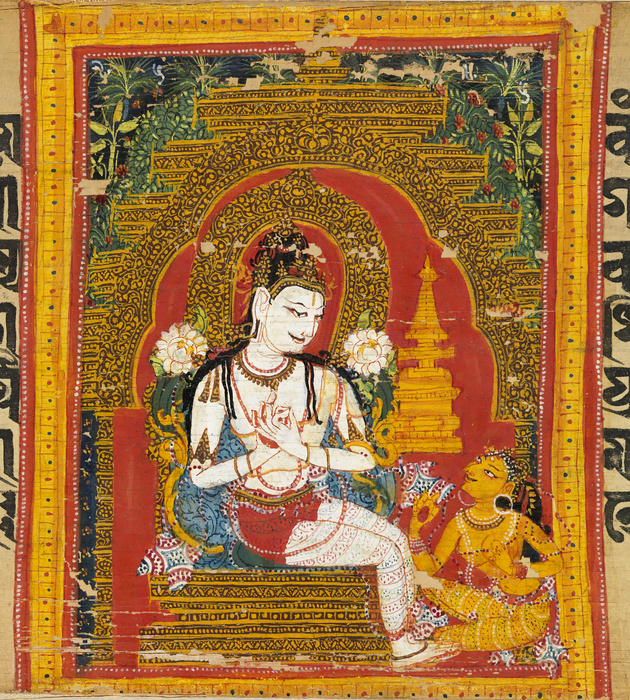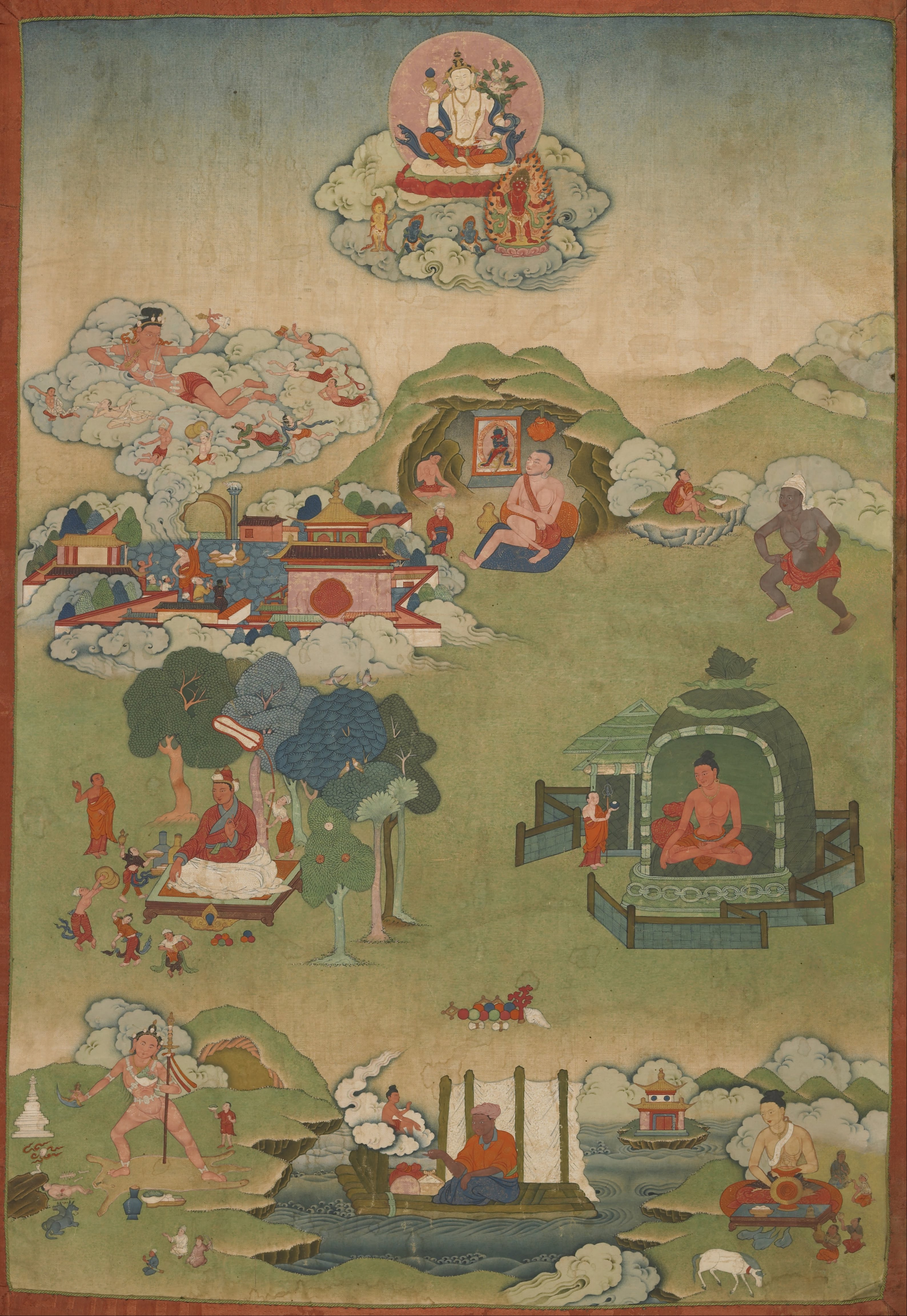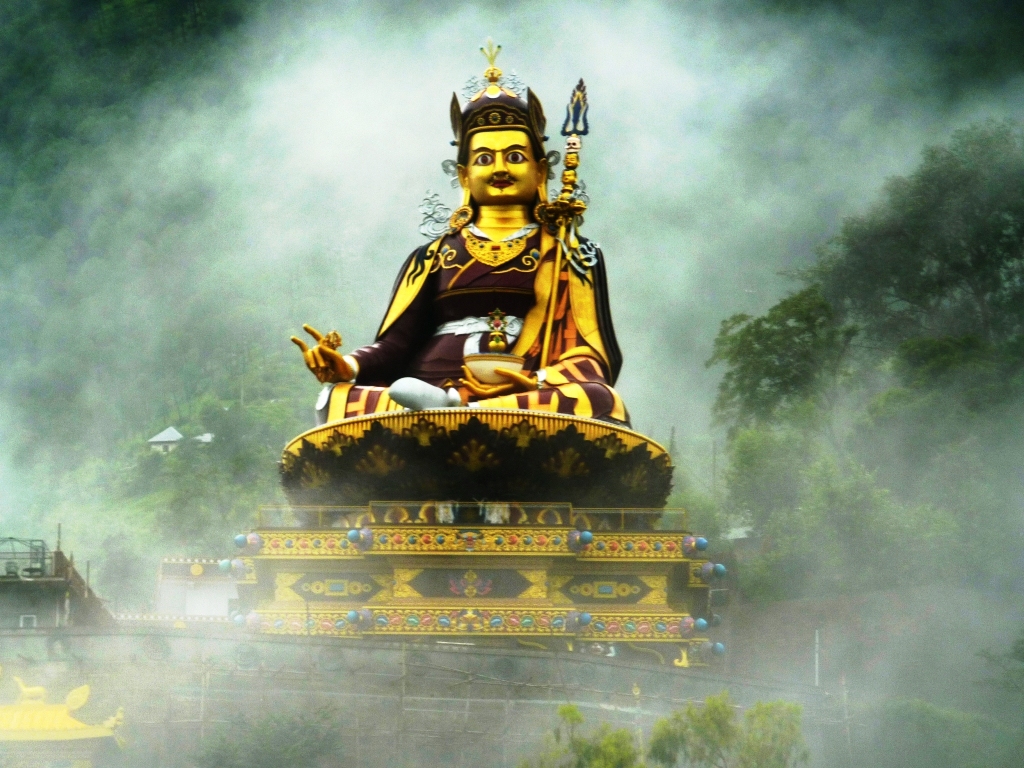|
Ralpachen
Tritsuk Detsen (), better known by his nickname Ralpachen () (c. 802 CE–838), was the 40th king of the Yarlung Dynasty of Tibet. He reigned after the death of his father, Sadnalegs, in c. 815, and grew the empire to its largest extent. He was murdered by his younger brother Langdarma in 838. Ralpachen is one of Tibet's three Dharma Kings, and referred to as "son of God" in the ancient Tibetan chronicle Testament of Ba. Ralpachen was the second eldest of five brothers. The eldest, Prince Tsangma, took Tibetan Buddhist vows with the Nyingma school. The third, U Dumtsen known as Langdarma, is referred to in the sources as "unfit to reign". The younger two brothers both died young., p. 17 Ralpachen is considered a very important king in the history of Tibet and Tibetan Buddhism, as one of the three Dharma Kings (''chosgyal'') of the Yarlung Dynasty, which include Songtsen Gampo the 33rd king, Trisong Detsen the 38th king, and Ralpachen. All three kings respectively contrib ... [...More Info...] [...Related Items...] OR: [Wikipedia] [Google] [Baidu] |
Tibetan Empire
The Tibetan Empire (,) was an empire centered on the Tibetan Plateau, formed as a result of expansion under the Yarlung dynasty heralded by its 33rd king, Songtsen Gampo, in the 7th century. It expanded further under the 38th king, Trisong Detsen, and reached its greatest extent under the 40th king, Ralpacan, Ralpachen, stretching east to Chang'an, west beyond modern Afghanistan, south into modern India and the Bay of Bengal. The Yarlung dynasty was founded in 127 BC in the Yarlung Valley along the Yarlung River, south of Lhasa. The Yarlung capital was moved in the 7th century from the palace Yumbulingka to Lhasa by the 33rd king Songtsen Gampo, and into the Red Fort during the imperial period which continued to the 9th century. The beginning of the imperial period is marked in the reign of the 33rd king of the Yarlung dynasty, Songtsen Gampo. The power of Tibet's military empire gradually increased over a diverse terrain. During the reign of Trisong Detsen, the empire became ... [...More Info...] [...Related Items...] OR: [Wikipedia] [Google] [Baidu] |
Trisong Detsen
Trisong Detsen () was the son of Me Agtsom, the 37th king of Tibet. As the 38th king, he ruled from AD 755 until 797. Trisong Detsen was the second of the Three Dharma Kings of Tibet — Songsten Gampo, Trisong Detsen, Rapalchen — honored for their pivotal roles in the introduction of Buddhism to Tibet and the establishment of the Nyingma or "Ancient" school of Tibetan Buddhism. ''Sowa Rigpa'' or Traditional Tibetan medicine was developed during his reign. Trisong Detsen became one of Tibet's greatest kings during its empire era, and an unparalleled Buddhist benefactor to Guru Padmasambhava, to Khenpo Shantarakshita, to his court, and to the founding of the Vajrayana. By the end of his reign, he grew the extents of Tibet beyond their previous borders, reset the borders between Tibet and China in 783, and even occupied the capital of China at Chang'an, where he installed a king. Claude Arpi, ''Glimpses of the Tibet History'', Dharamsala: The Tibet Museum, 2016, Chapter 6, "A ... [...More Info...] [...Related Items...] OR: [Wikipedia] [Google] [Baidu] |
Sadnalegs
Mutik Tsenpo the 39th king of Tibet had several names: formally ''Tridé Tsenpo'' (), and his nickname ''Sadnalegs'' (). He was the third and youngest son of King Trisong Detsen. He reigned between the disputed king of Tibet, Mune Tsenpo, and the 40th king, Ralpachen, making the dates of his reign from 800 to 815 CE. After Trisong Detsen retired to live at Zungkar, he passed the throne to his second son, Muné Tsenpo, who reigned from in 797 to 799. It is said that Muné Tsenpo was poisoned by his mother. Buton Rinchen Drub states that Muné Tsenpo's throne was passed to his brother Mutik Tsenpo, who was later "known by the surname of Sen-na-le (fn. 1351, Sadnalegs)."Buton Rinchen Drub, 1356. ''History of Buddhism''. Translated by E. Obermiller, 1932. Heidelberg: University of Heidelberg, pgs. 1-233 Both the '' Chronicle of Ba'', other Tibetan sources, and the ''Old Book of Tang'' agree that since Muné Tsenpo had no heirs, the throne passed to his younger brother, Mutik Ts ... [...More Info...] [...Related Items...] OR: [Wikipedia] [Google] [Baidu] |
Langdarma
Darma U Dum Tsen (), better known as Langdarma (, "Mature Bull" or "Darma the Bull"), was the 41st and last king of the Tibetan Empire who in 838 killed his brother, King Ralpachen, then reigned from 841 to 842 CE before he himself was assassinated.Arthur Mandelbaum, "Lhalung Pelgyi Dorje", Treasury of Lives, 2007. His reign led to the dissolution of the Tibetan Empire, which had extended beyond the Tibetan Plateau to include the Silk Roads with the Tibetan imperial manuscript center at Sachu (Dunhuang), and neighbouring regions in China, East Turkestan, Afghanistan, and India.Samten Karmay ''in'' , pg. 57 History Earlier in his life as a Tibetan prince, Langdarma was Buddhist, but under the influence of Wégyel Toré (), he became a follower of Bon, after which he assassinated his brother King Ralpachen, in 838. Following this, he widely persecuted Tibetan monks, nuns, and destroyed their monasteries"History of Meru Nyingpa Monastery", ''Places'', ''Monasteries'', The H ... [...More Info...] [...Related Items...] OR: [Wikipedia] [Google] [Baidu] |
Nyingma
Nyingma (, ), also referred to as ''Ngangyur'' (, ), is the oldest of the four major schools of Tibetan Buddhism. The Nyingma school was founded by PadmasambhavaClaude Arpi, ''A Glimpse of the History of Tibet'', Dharamsala: Tibet Museum, 2013. as the first translations of Buddhist scriptures from Pali and Sanskrit into Tibetic languages, Tibetan occurred in the eighth century. The establishment of Tibetan Buddhism and the Nyingma tradition is collectively ascribed to Khenpo Shantarakshita, Guru Padmasambhava, and King Trisong Detsen, known as ''Khen Lop Chos Sum'' (The Three: Khenpo, Lopon, Chosgyal). The Nyingma tradition traces its Dzogchen lineage from the Adi-Buddha, first Buddha Samantabhadra to Garab Dorje, and its other lineages from Indian mahasiddhas such as Sri Singha and Jnanasutra. Yeshe Tsogyal recorded the teachings. Other great masters from the founding period include Vimalamitra, Vairotsana, and Buddhaguhya. The Nyingma tradition was physically founded at Samye ... [...More Info...] [...Related Items...] OR: [Wikipedia] [Google] [Baidu] |
Jokhang Monastery
The Jokhang (, zh, s=大昭寺}), historically known as the Rasa Trulnang (ra sa 'phrul snang) or Qoikang Monastery or Zuglagkang ( or Tsuklakang), is considered the "heart of Lhasa"."Jokhang". MAPS, Places. University of Virginia. The Jokhang consists of a Tibetan Buddhist temple, its temple complex, and a Gelug school monastery. Located in Barkhor Square, it was built in c.640 by King Songsten Gampo to house the Jowo Mikyo Dorje, a statue of Akshobhya Buddha, brought to Tibet by his Nepalese queen, Bhrikuti. Another statue, the Jowo Shakyamuni, brought by his Tang Chinese queen Wencheng, is currently housed in the temple and the Jowo Mikyo Dorje is housed in the Ramoche, in Lhasa. Many Nepalese and Indian artists and craftsmen worked on the temple's original design and construction. Around the 14th century, the temple was associated with the Vajrasana in India. In the 18th century the Qianlong Emperor of the Qing dynasty, following the Nepalese Gorkha invasion of Tibe ... [...More Info...] [...Related Items...] OR: [Wikipedia] [Google] [Baidu] |
Mahayana
Mahāyāna ( ; , , ; ) is a term for a broad group of Buddhist traditions, Buddhist texts#Mahāyāna texts, texts, Buddhist philosophy, philosophies, and practices developed in ancient India ( onwards). It is considered one of the three main existing branches of Buddhism, the others being Theravāda and Vajrayāna.Harvey (2013), p. 189. Mahāyāna accepts the main scriptures and teachings of Early Buddhist schools, early Buddhism but also recognizes various doctrines and texts that are not accepted by Theravada Buddhism as original. These include the Mahāyāna sūtras and their emphasis on the ''bodhisattva'' path and Prajnaparamita, ''Prajñāpāramitā''. Vajrayāna or Mantra traditions are a subset of Mahāyāna which makes use of numerous Tantra, tantric methods Vajrayānists consider to help achieve Buddhahood. Mahāyāna also refers to the path of the bodhisattva striving to become a fully awakened Buddha for the benefit of all sentience, sentient beings, and is thus also ... [...More Info...] [...Related Items...] OR: [Wikipedia] [Google] [Baidu] |
Vajrayana
''Vajrayāna'' (; 'vajra vehicle'), also known as Mantrayāna ('mantra vehicle'), Guhyamantrayāna ('secret mantra vehicle'), Tantrayāna ('tantra vehicle'), Tantric Buddhism, and Esoteric Buddhism, is a Mahāyāna Buddhism, Mahāyāna Buddhist tradition that emphasizes Eastern esotericism, esoteric practices and rituals aimed at Sudden awakening, rapid spiritual awakening. Emerging between the 5th and 7th centuries CE in medieval India, Vajrayāna incorporates a Tibetan tantric practice, range of techniques, including the use of mantras (sacred sounds), dhāraṇīs (mnemonic codes), mudrās (symbolic hand gestures), mandalas (spiritual diagrams), and the visualization of Buddhist deities, deities and Buddhahood, Buddhas. These practices are designed to transform ordinary experiences into paths toward Enlightenment in Buddhism, enlightenment, often by engaging with aspects of Taṇhā, desire and Dvesha, aversion in a ritualized context. A distinctive feature of Vajrayāna is ... [...More Info...] [...Related Items...] OR: [Wikipedia] [Google] [Baidu] |
Guru Padmasambhava
Padmasambhava ('Born from a Lotus'), also known as Guru Rinpoche ('Precious Guru'), was a legendary tantric Buddhist Vajra master from Oddiyana. who fully revealed the Vajrayana in Tibet, circa 8th – 9th centuries... He is considered an emanation or Nirmāṇakāya of Shakyamuni Buddha as foretold by the Buddha himself. According to early Tibetan sources including the '' Testament of Ba'', he came to Tibet in the 8th century and designed Samye Monastery, the first Buddhist monastery in Tibet during the reign of King Trisong Detsen. He, the king, and Khenpo Shantarakshita are also responsible for creating the Tibetan Canon through translating all of the Buddha's teachings and their commentaries into the Tibetan language. According to Lewis Doney, while his historical authenticity was questioned by earlier Tibetologists, it is now "cautiously accepted.” Padmasambhava himself was recorded as saying he was an historical person, and his footprints left in rocks are evidence. ... [...More Info...] [...Related Items...] OR: [Wikipedia] [Google] [Baidu] |
Lhasa
Lhasa, officially the Chengguan District of Lhasa City, is the inner urban district of Lhasa (city), Lhasa City, Tibet Autonomous Region, Southwestern China. Lhasa is the second most populous urban area on the Tibetan Plateau after Xining and, at an altitude of , Lhasa is one of the List of highest large cities, highest cities in the world. The city has been the religious and administrative capital of Tibet since the mid-17th century. It contains many culturally significant Tibetan Buddhism, Tibetan Buddhist sites such as the Potala Palace, Jokhang Temple and Norbulingka Palaces. Toponymy Lhasa literally translates to "place of gods" ( , god; , place) in the Lhasa Tibetan, Tibetan language. Chengguan literally translates to "urban gateway" ( zh, s=城关, p=Chéngguān) in the Chinese language. Ancient Tibetan documents and inscriptions demonstrate that the place was called Rasa (), which meant "goat's place", as it was a herding site. The name was changed to Lhasa, which ... [...More Info...] [...Related Items...] OR: [Wikipedia] [Google] [Baidu] |
Chang'an
Chang'an (; zh, t=長安, s=长安, p=Cháng'ān, first=t) is the traditional name of the city now named Xi'an and was the capital of several Chinese dynasties, ranging from 202 BCE to 907 CE. The site has been inhabited since Neolithic times, during which the Yangshao culture was established in Banpo, in what is now the city's suburbs. Furthermore, in the northern vicinity of modern Xi'an, Qin Shi Huang of the Qin dynasty, China's first emperor, held his imperial court and constructed his massive mausoleum guarded by the Terracotta Army. From its capital at Xianyang, the Qin dynasty ruled a larger area than either of the preceding dynasties. The imperial city of Chang'an during the Han dynasty was located northwest of today's Xi'an. During the Tang dynasty, the area that came to be known as Chang'an included the area inside the Ming Xi'an fortification, plus some small areas to its east and west, and a substantial part of its southern suburbs. Thus, Tang Chang'an was eight t ... [...More Info...] [...Related Items...] OR: [Wikipedia] [Google] [Baidu] |








